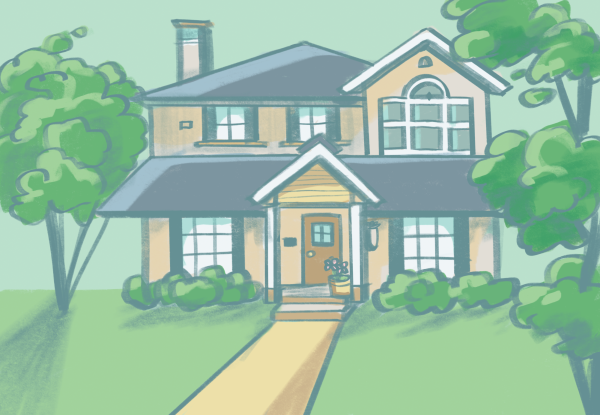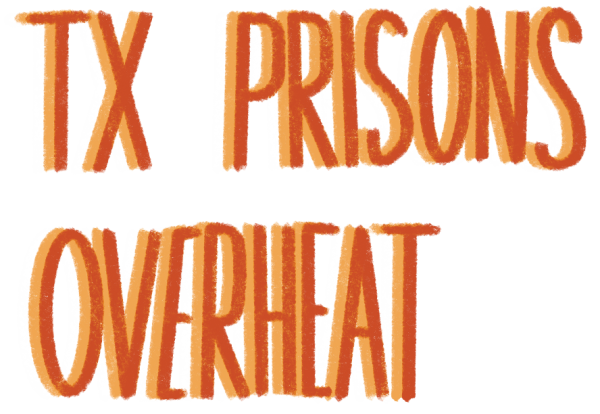Issue 5 staff stance: Students lead national conversation on gun reform
May 29, 2018
We have a school mass shooting problem in the United States. There are more guns per capita in the US than any other country in the world. This is not a coincidence.
The National Rifle Association (NRA) would like us to believe that these two things are not connected: the problem isn’t all the “bad guys” with the guns, they say, it’s just that there are not enough “good guys” with guns. Republican lawmakers would like us to believe that these two things are not connected: protecting people’s rights to bear arms (any people, any number of guns, any kind of guns), they say, is a more critical priority than managing gun violence. President Trump would have us believe these two things are not connected: “sickos” are the problem, he says; “soft” schools are the problem; “cowardly” deputies are the problem; Obama is the problem.
Yes, Trump struck a different tone on gun control in a bipartisan meeting with members of Congress on Feb. 27, signalling an interest in comprehensive gun control. But by March 1st, after meeting with NRA lobbyists in the Oval Office, he had, unsurprisingly, walked back his earlier enthusiasm for legislation limiting access to firearms. The “school safety” legislation passed Mar. 14 by the House of Representatives included no gun control measures whatsoever.
Mass shootings are generally understood to be incidents in which at least four people are shot. The latest mass school shooting to capture national attention occurred Feb. 14, when a former student of Marjory Stoneman Douglas High School in Parkland, Florida went on a rampage and shot and killed 17 people, injuring 14 others. The AR-15 semi-automatic rifle was his weapon of choice, just as it was in the Las Vegas, Nevada shooting (58 dead), the Aurora, Colorado movie theatre shooting (12 dead), and the San Bernardino, California shooting (14 dead).
Tragically, mass shootings are not a new phenomenon in America. Between Jan. 1 and Feb. 15, 2018, the day after the tragedy in Florida, there were 30 mass shootings. According to data from the Gun Violence Archive, over 1800 people have died so far this year as a result of gun violence. There will most certainly and tragically have been more before this issue goes to print. This is unacceptable. But it is not an inevitability.
We at The Liberator stand with the students of Stoneman Douglas High School, and with young people around the country, in support of an invigorated effort to disrupt this cycle of outrage. We are ready to call out those complicit in its perpetuation: the NRA and the lawmakers and leaders in bed with them. We recognize that the groundwork for this movement has been laid by African-American teens who have been protesting gun violence, advocating for relevant policy reforms, and challenging the NRA for years, despite the absence of the drum beat of popular support that is emerging now.
The United States has been heralded as a hotbed of innovation. Here at LASA we are taught that a critical component of ingenuity is the ability to learn from one’s mistakes. Yet, each time a mass shooting occurs, the political postmortem follows a similar trajectory. Politicians offer their “thoughts and prayers.” They bemoan the loss of innocent life. They declare a willingness to explore remedies…when the time is right. (Not now, though. Too soon! Let’s not play “the blame game”). Eventually, we turn our collective attention back to our regularly scheduled programming. Mass shootings have become our “new normal.”
But this time, the customary script has skidded off track. The role that racial and class biases has played in undermining the realization of this momentum previously should also be noted. The students of the well-resourced Stoneman Douglas High School are largely white and middle income. That their activism is resonating with the general public is also no coincidence.
In the aftermath of the shooting at their school, Stoneman Douglas High School students, and students from around the country, are redefining the terms of a our national conversation about guns. We are rebuffing adults’ efforts to restore social equilibrium and return to the old playbook. We are demanding that politicians take meaningful gun control action and that we confront and hold accountable the long unchallenged third rail of American politics, the NRA, whose impact on policy making has rendered the gun lobby essentially our fourth branch of government.
From our living rooms, and via social media (#NeverAgain), students are organizing school walkouts and national marches. We are outlining actionable proposals to address the epidemic of gun violence in our country and calling for improving background checks, raising the age limit on the purchase of guns, and banning bump stocks and semi-automatic weapons.
We at the Liberator want to add our voices to this powerful chorus. Our response to the Stoneman Douglas High School shooting, may have started with thoughts and prayers, but it cannot end there. We say again: mass shootings are not inevitable. In 1996 in Australia a gunman shot and killed 35 people Tasmania in what is known as the Port Arthur Massacre. In response, Australian states adopted a National Firearms Agreement that bans all semi-automatic rifles and all semi-automatic and pump-action shotguns and significantly restricts gun ownership and licensing. There have been no mass shootings in Australia since 1996.
So, it’s a “NO” to President Trump’s apparently preferred strategy: arming teachers. A rush is on to move forward on this front. Bills to arm teachers are already under consideration in Florida and Tennessee, and concealed carry in schools is already permitted in many states, including Texas, even as educators, parents, students, and many lawmakers (from both parties) have been voicing a myriad of concerns with this proposed policy.
Armed protection of students is not in teacher’s job description, nor should it be. Moreover, the increased presence of of guns at school would likely make students, particularly students of color, feel significantly less safe. Even setting aside the ludicrous prioritization of funding for guns in schools over books and teachers’ salaries, we, the students, must again draw the adults in the room back to this core fact: more guns make us less safe. In Utah 2014, a preschool teacher living in a state that permits concealed carry laws accidentally shot herself in the foot with her own gun. At school. In Pennsylvania in 2016 an elementary school teacher left her holstered gun in a school bathroom and a student found it. On Feb. 28 a teacher at Dalton High School barricaded himself in his classroom and fired a handgun (No one was hurt). Should incidents like those, too, be our new normal?
We at the Liberator, emphatically, say “no.” But unwinding current gun policy dogma will require addressing the stranglehold the gun lobby has on United States politics. Not only does the NRA wield its substantial influence directly at the national level by donating significantly to the campaigns of predominantly Republican members of Congress, but the import of its impact at the local level cannot be overstated. The NRA funds the campaigns of state level candidates who are supportive of its agenda. In turn, these politicians facilitate the gerrymandering of voting maps that (not coincidentally) both disenfranchise underrepresented minorities and secure the political wins necessary to bolster their agenda further. The NRA has declared itself to be a political entity that cannot be denied.
But Stoneman Douglas High School students have not been intimidated. In a speech three days after the shooting, 18 year old Emma Gonzalez called out Trump and the NRA directly. “If the president wants to come up to me and tell me to my face that it was a terrible tragedy and how it should never have happened and maintain telling us how nothing is going to be done about it, I’m going to happily ask him how much money he received from the National Rifle Association. You want to know something? It doesn’t matter, because I already know. Thirty million dollars. To every politician who is taking donations from the NRA, shame on you.”
The Stoneman Douglas High School student activists are a force to be reckoned with. And thus conservative commentators and other adults alike have been quick to not only dismiss these students–but attack them. Douglas High School students have been labeled “crisis actors” as if such forceful, emotive activism is beyond their capacity. We at The Liberator applaud Gonzalez, her peers, and all the students rising up in this moment. Students are not talking about guns just for show. We are not speaking up and acting out in an effort to accrue more “likes” and better curate our social media presence. Our activism is not a stunt. We demand sensible gun control because mass shootings have to stop. We demand sensible gun control because gun violence is imperiling the social fabric of our communities. We demand sensible gun control because the NRA is not in charge of our government.
How this new discourse and engagement around gun control plays out, and whether or not it will result in meaningful policy change, is yet to be seen. But what is already in plain view is that in the wake of the mass shooting in Florida, students are redefining both gun politics and student activism. Our call for our voices to be heard is no longer simply an appeal for listeners. We are driving the conversation.







